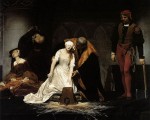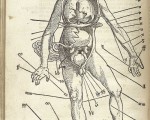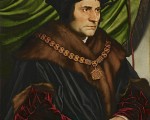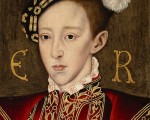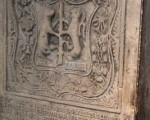
-
Gillyflowers for Lord Guildford Dudley

-
12 February 1554 – Lady Jane Grey is executed
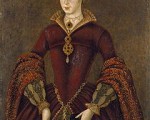
On this day in history, Lady Jane Grey and her husband, Lord Guildford Dudley, were executed for treason.
[Read More...] -
Elizabeth I and the fall of Mary, Queen of Scots Part 2
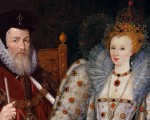
In today’s Claire chats I continue my examination of the fall of Mary, Queen of Scots, by looking at the controversy surrounding the death warrant and examining the Bond of Association and the Act for the Queen’s Safety.
[Read More...] -
Elizabeth of York by Sarah Bryson
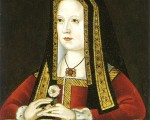
On 11th of February 1466, Elizabeth of York was born at the Palace of Westminster. Exactly thirty seven years later, at the Tower of London, Elizabeth died shortly after giving birth to her last child.
Elizabeth of York was the eldest child of King Edward IV and his wife Queen Elizabeth Woodville. Elizabeth was christened in St Stephen’s Chapel in Westminster Abbey. Jacquetta of Luxembourg, Duchess of Bedford, and Cecily Neville, Duchess of York, stood as her godmothers and Richard Neville, Earl of Warwick, stood as her godfather.
[Read More...] -
Queen Elizabeth I: A Timewatch Guide

Just to let you know that this programme is on at 9pm on Wednesday (10th February) on the UK’s BBC Four channel. Here’s the blurb:
“Vanessa Collingridge examines the life of Elizabeth Tudor, with particular interest in how documentary television and the BBC has examined her legacy….”
[Read More...] -
8 February 1587 – Mary, Queen of Scots is executed at Fotheringhay
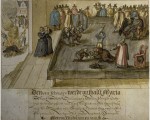
On this day in history, Wednesday 8th February, Mary, Queen of Scots was executed at Fotheringhay Castle, following the arrival of her death warrant at the castle the day before.
Mary had been tried in October 1586 for her involvement in the Babington Plot, a plot to assassinate Queen Elizabeth I, and had been found guilty. Elizabeth I put off signing her death warrant, struggling with the idea of killing an anointed monarch, but finally signed the warrant on 1st February 1587, although Elizabeth claimed later that she ordered her secretary, William Davison, not to do anything with it for the time being. As I mentioned in my article on the death warrant, Elizabeth’s Privy Council met and agreed to send the warrant to Fotheringhay without the Queen’s knowledge. It is impossible to know exactly what happened. Did Davison misunderstand the Queen’s instructions and intentions? Probably not. Some historians believe that William Cecil, Lord Burghley, chose Davison to be a scapegoat because he realised that Elizabeth needed someone to take the responsibility for Mary’s death away from her, but others believe that it was Elizabeth who chose Davison as the scapegoat.
[Read More...] -
This week in history 8 – 14 February
-
Tudor Medicine Quiz
-
Elizabeth I and the fall of Mary, Queen of Scots
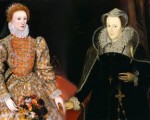
In this week’s Claire Chats I start a two part series on Elizabeth I and the fall of Mary, Queen of Scots. Today, I focus on what led to Mary, Queen of Scots’ execution and next week I will examine the controversy surrounding her death warrant.
[Read More...] -
John Rogers, the first Protestant martyr of Mary I’s reign
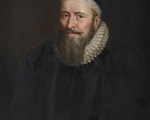
On this day in history, 4th February 1555, John Rogers, clergyman and Biblical editor, was burned at the stake at Smithfield. Rogers was the first England Protestant burned in Mary I’s reign after being condemned as a heretic. he refused the chance of a last minute pardon if he recanted, and died bravely. His wife and eleven children, one being newborn and at the breast, attended his burning. Martyrologist John Foxe recorded that Rogers “constantly and cheerfully took his death with wonderful patience, in the defence and quarrel of the Gospel of Christ.”
[Read More...] -
Candlemas
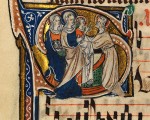
Candlemas, or the the Feast of the Presentation of Christ in the Temple and the Purification of the Blessed Virgin, is celebrated on 2nd February. It commemorates the purification (or churching, as medieval people would have seen it) of the Virgin Mary forty days after the birth of Jesus Christ, when it was traditional for the mother to make an offering or sacrifice according to Jewish law, and the presentation of the baby Jesus at the temple in Bethlehem.
[Read More...] -
Bloody Queens: Elizabeth and Mary
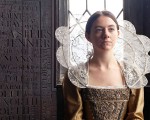
If you’re in the UK or have access to the UK’s BBC2 then make sure that you catch this programme on BBC2 today (1st February 2016) at 9pm. Here’s the blurb from the BBC:
[Read More...] -
Elizabeth Fremantle – Book Excerpt and Giveaway!
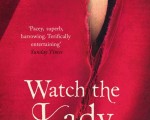
Check out this excerpt from Elizabeth Fremantle’s book “Watch the Lady” and (if it is still February 2016) you can be in with a chance to win a copy!
[Read More...] -
Tudor stained glass depicting a young Henry VIII is restored
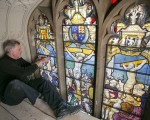
After a huge restoration project, Tudor stained glass windows are being reinstalled at The Vyne in Hampshire, a property that Henry VIII visited several times. In one of the stained glass panels “a slim and beardless young Henry VIII kneels meekly in prayer near his beloved wife Catherine of Aragon and his sister Margaret.”
[Read More...] -
1 February 1514 – The Making of Two Dukes by Sarah Bryson
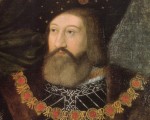
On Candlemas Eve,* 1st February 1514, Henry VIII formally elevated two men to the title of Duke. Charles Brandon, formerly Viscount Lisle, was created Duke of Suffolk, and Thomas Howard, Earl of Surrey, was created 2nd Duke of Norfolk. The ceremony took place at Lambeth and was conducted by the King.
Along with the nearly created Dukes of Suffolk and Norfolk, the only other duke in the Kingdom was Edward Stafford, Duke of Buckingham. Buckingham was a descendent of Thomas Woodstock, youngest son of Edward III. In addition to this, his mother was Katherine Woodville, sister of the late Queen Elizabeth Woodville, wife of King Edward IV. At the time, Buckingham was also the richest peer in England, with an annual income of around £6000 per year (£2,902,620.00) as well as being High Steward of England and a Privy Councillor. These positions gave Stafford a great deal of power. With royal blood running through his veins and an arrogant attitude, Buckingham was a regular member at court but it was reported that he often made those around him feel uncomfortable.
[Read More...] -
1 February 1587 – Elizabeth I signs the death warrant of Mary, Queen of Scots
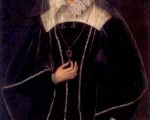
On this day in history, 1st February 1587, Elizabeth I called her secretary, William Davison, to her and asked him to bring her Mary, Queen of Scots’s death warrant. She then signed it.
Mary, Queen of Scots, had been tried in October 1586 for her involvement in the Babington Plot, a plot to assassinate Queen Elizabeth I. As the trial closed, Mary demanded that she should be heard in front of Parliament or the Queen, but she was fighting a losing battle. Sentence was delayed as long as possible, by order of Elizabeth, but on 25th October the commission reconvened and found Mary guilty. On 29th October, Parliament met to discuss Mary, the Babington Plot and her role in Lord Darnley’s murder, and it was decided that they should petition Elizabeth to execute Mary. This put Elizabeth in a difficult position as she did not want to be accused of regicide. On the 4th December, Mary was publicly proclaimed guilty.
[Read More...] -
This week in history 1 – 7 February
-
1 February 1554 – Mary I rallies London against Wyatt’s Rebellion
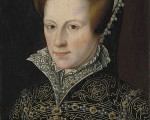
On this day in 1554, Queen Mary I gave a rousing speech at the Guildhall to rally Londoners to her cause and to oppose Wyatt’s rebellion. Contemporary John Proctor recorded that Mary “did wonderfullye inamour the heartes of the hearers as it was a world to heare with what shoutes they exalted the honour and magnanimitie of Quene Mary”.
Mary denounced Thomas Wyatt the Youngerand his rebels, but said that she had sent two of her privy council to “the traitour Wyat, desirous rather to quiete thys tumulte by mercie, then by iustice [justice] of the sworde to vanquishe.” She defended her plan to marry Philip of Spain as being beneficial to England, and affirmed:
[Read More...] -
Tudor Pets Quiz
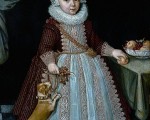
Tudor people were just like us, they loved their animals, but how much do you know about the pets of the Tudors? Test your knowledge with this fun quiz.
[Read More...] -
Thomas Tallis, Tudor composer, by Heather R. Darsie
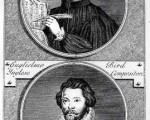
It is thought that Thomas Tallis, alternatively spelled “Tallys,” could have been born on 30 January 1505, though it is not known for certain. What is known is that Tallis did not die until 1585, and that he contributed greatly to the development and composition of English choral music. Not much is known about Tallis’s early life. There are no records of his education or really of his whereabouts until Tallis is well into his 20s. There is also no contemporary portrait of him, with the only existing portrait having been executed sometime after his death.
[Read More...] -
Tudor Gingerbread
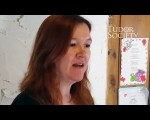
For this week’s Claire Chats I wanted to share with you a video I’ve just made for my “Tudor Cooking with Claire” series. I love ginger and so was interested to find various mentions of “ginger bread” in medieval and Tudor recipe books and to find that it really was ‘gingered bread’.
[Read More...] -
God’s Kingdom Awaits: The Death of Henry VIII by Beth von Staats
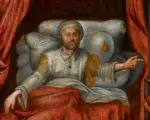
As today is the anniversary of the death of King Henry VIII in 1547, Beth von Staats, Tudor Life magazine contributor and author of Thomas Cranmer in a Nutshell, has written a very moving piece of fiction about Henry VIII’s final days from the viewpoint of Thomas Cranmer. I do hope you enjoy it.
It is time for the Lord to act; they have frustrated Your law. ~~~ Psalm 119:126
[Read More...] -
February 2016 Tudor Life Magazine
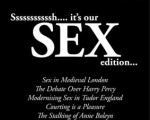
It’s our sex edition … and there are lots of things to discover within February’s Tudor Life magazine. Dare you read on? (Actually you won’t be shocked, but you will learn a lot!)
[Read More...] -
27 January 1596 – The death of Sir Francis Drake
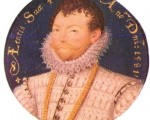
On the 27th January 1596, Sir Francis Drake, explorer, sea captain and pirate, died of dysentery in Portobelo harbour, Panama. When he realised that death was near, he asked to be dressed in his armour. Although he requested burial on land, Drake was buried at sea in a lead coffin, along with his second cousin, Admiral Sir John Hawkins.
Drake made his first voyage to the New World at the age of around twenty-three, with Hawkins, whose family owned a fleet of ships based in Plymouth. Another voyage saw the fleet trapped by Spaniards in the Mexican port of San Juan de Ulua in 1568. Fortunately, the two men managed to escape, but they lost all but two of their fleet. In 1570 and 1571, Drake undertook two trading voyages to the West Indies, and in 1572 took two ships on a marauding campaign against the Caribbean’s Spanish ports. Drake was able to capture the port of Nombre de Dios and return to England, his ships laden with Spanish booty. In 1573 Drake attacked a mule train with the help of Guillaume Le Testu, the French buccaneer, capturing around 20 tons of gold and silver.
[Read More...] -
26 January 1554 – Mary I warns Elizabeth of the danger of Wyatt’s Rebellion
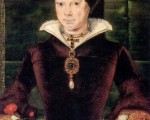
ary I became queen in 1553 and although the English people had been happy for her to become queen, some noblemen became worried about her plans to marry Philip II of Spain and the religious changes her reign was bringing. A group of men including Thomas Wyatt the Younger, Henry Grey (Duke of Suffolk and father of Lady Jane Grey), Sir Peter Carew, Sir Edward Rogers, Sir Edward Warner, Sir William Pickering, Sir Nicholas Throckmorton, Sir James Croft, Sir George Harper, Nicholas Arnold, William Thomas and William Winter decided that a military coup might be the only way to prevent Mary’s marriage and planned a series of uprisings with the aim of deposing Mary I and replacing her with her half-sister Elizabeth, who would marry Edward Courtenay, Earl of Devon.
[Read More...] -
This week in history 25 – 31 January
-
In the Tudor Period or Not?
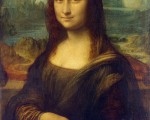
Today’s quiz is a bit easier than normal, seeing as you have a 50/50 chance of getting each question right, but can I still catch you out? Did these events take place in the Tudor period or not? Have fun!
[Read More...] -
Jousting by Sarah Bryson
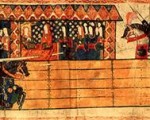
]During a jousting event on this day in history, 24th January 1536, Henry VIII fell from his horse and in full armour was crushed under the weight of the animal. Eustace Chapuys, ambassador to Charles V wrote:
“On the eve of the Conversion of St. Paul, the King being mounted on a great horse to run at the lists, both fell so heavily that every one thought it a miracle he was not killed.”
Many articles and even whole books have been written about this fateful event and how such a traumatic experience, both physically and psychologically, may have permanently changed the King’s mental stability. This article, however, instead explores a little of the history of the joust and why Henry VIII was such a fervent lover of the sport.
[Read More...] -
Transcript of Kyra Kramer Live Chat

For anyone who wants to re-cap the fun or if you missed the chat, here is the transcript of the session we had with Kyra Kramer last night.
[Read More...] -
Richard Edwards – Henry VIII’s illegitimate son?

In today’s Claire Chats I look at Richard Edwards: who he was and how he has become linked to Henry VIII.
[Read More...]

